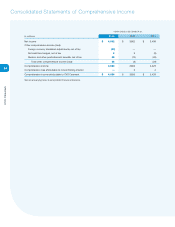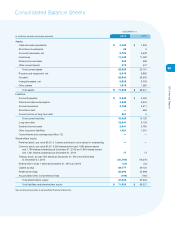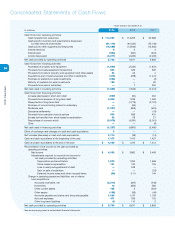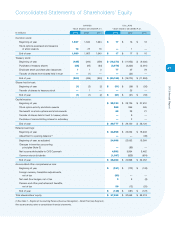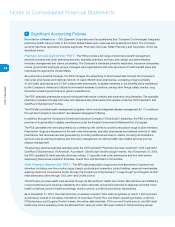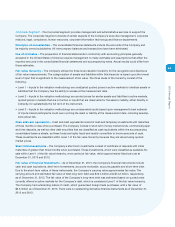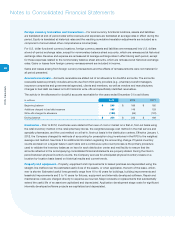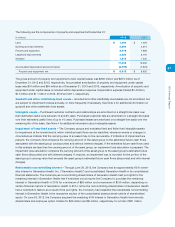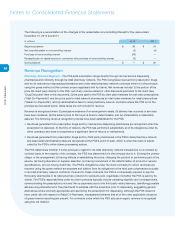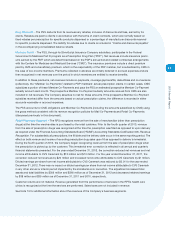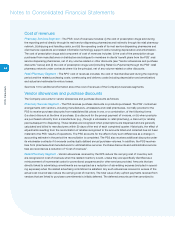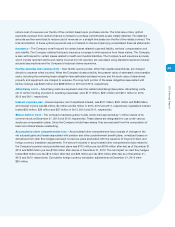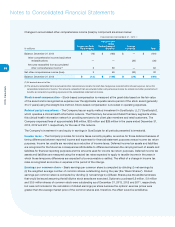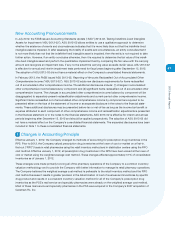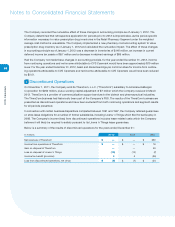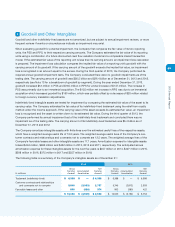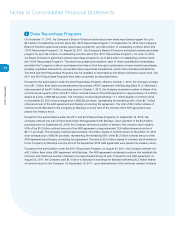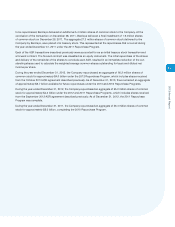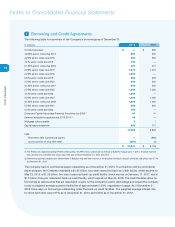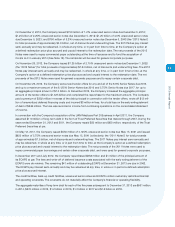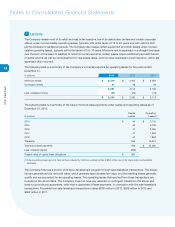CVS 2013 Annual Report Download - page 66
Download and view the complete annual report
Please find page 66 of the 2013 CVS annual report below. You can navigate through the pages in the report by either clicking on the pages listed below, or by using the keyword search tool below to find specific information within the annual report.
64
CVS Caremark
Notes to Consolidated Financial Statements
Cost of revenues
Pharmacy Services Segment –
The PSS’ cost of revenues includes: (i) the cost of prescription drugs sold during
the reporting period directly through its mail service dispensing pharmacies and indirectly through its retail pharmacy
network, (ii) shipping and handling costs, and (iii) the operating costs of its mail service dispensing pharmacies and
client service operations and related information technology support costs including depreciation and amortization.
The cost of prescription drugs sold component of cost of revenues includes: (i) the cost of the prescription drugs
purchased from manufacturers or distributors and shipped to members in clients’ benefit plans from the PSS’ mail
service dispensing pharmacies, net of any volume-related or other discounts (see “Vendor allowances and purchase
discounts” below) and (ii) the cost of prescription drugs sold (including Retail Co-Payments) through the PSS’ retail
pharmacy network under contracts where it is the principal, net of any volume-related or other discounts.
Retail Pharmacy Segment –
The RPS’ cost of revenues includes: the cost of merchandise sold during the reporting
period and the related purchasing costs, warehousing and delivery costs (including depreciation and amortization)
and actual and estimated inventory losses.
See Note 13 for additional information about the cost of revenues of the Company’s business segments.
Vendor allowances and purchase discounts
The Company accounts for vendor allowances and purchase discounts as follows:
Pharmacy Services Segment –
The PSS receives purchase discounts on products purchased. The PSS’ contractual
arrangements with vendors, including manufacturers, wholesalers and retail pharmacies, normally provide for the
PSS to receive purchase discounts from established list prices in one, or a combination, of the following forms:
(i) a direct discount at the time of purchase, (ii) a discount for the prompt payment of invoices, or (iii) when products
are purchased indirectly from a manufacturer (e.g., through a wholesaler or retail pharmacy), a discount (or rebate)
paid subsequent to dispensing. These rebates are recognized when prescriptions are dispensed and are generally
calculated and billed to manufacturers within 30 days of the end of each completed quarter. Historically, the effect of
adjustments resulting from the reconciliation of rebates recognized to the amounts billed and collected has not been
material to the PSS’ results of operations. The PSS accounts for the effect of any such differences as a change in
accounting estimate in the period the reconciliation is completed. The PSS also receives additional discounts under
its wholesaler contracts if it exceeds contractually defined annual purchase volumes. In addition, the PSS receives
fees from pharmaceutical manufacturers for administrative services. Purchase discounts and administrative service
fees are recorded as a reduction of “Cost of revenues”.
Retail Pharmacy Segment –
Vendor allowances received by the RPS reduce the carrying cost of inventory and
are recognized in cost of revenues when the related inventory is sold, unless they are specifically identified as a
reimbursement of incremental costs for promotional programs and/or other services provided. Amounts that are
directly linked to advertising commitments are recognized as a reduction of advertising expense (included in operat-
ing expenses) when the related advertising commitment is satisfied. Any such allowances received in excess of the
actual cost incurred also reduce the carrying cost of inventory. The total value of any upfront payments received from
vendors that are linked to purchase commitments is initially deferred. The deferred amounts are then amortized to


